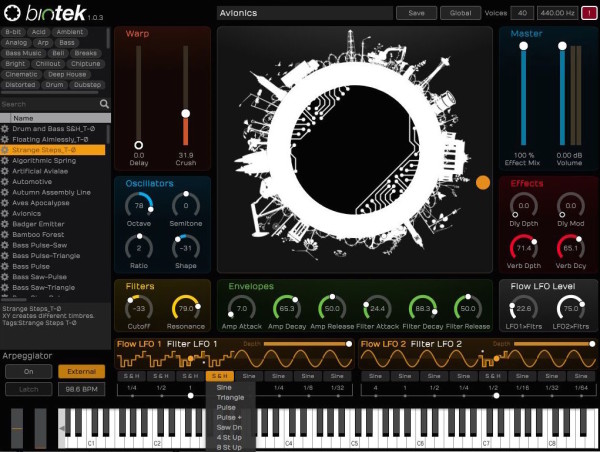
The new BioTek virtual instrument from Tracktion is not your run of hybrid synthesizer and sample-based software offering. It’s truly unique as Timo Preece discovers in this in-depth review.
Built on the entirely new Acktion™ platform, BioTek is a unique virtual instrument, which combines an advanced synthesis engine with an array of sampled sounds from natural, urban and mechanical environments. The single-screen user interface is dominated by a powerful XY controller and a number of soft controls that change function based on the particular patch in use.
Several weeks after its initial release, Seattle-based Tracktion Corporation launched BioTek’s first public update. Version 1.03 brings forth some bug fixes and several important feature enhancements including adding Flow LFO Shape controls and Flow LFO modulation depth sliders for additional hands on control.
I’ve enjoyed playing around with BioTek the past couple weeks and managed to conjure up a plethora of easily accessible idiosyncratic permutations and combinations. Additionally, I had a chance to follow up by asking some burning yearning questions to the reputable Traction team that I’d like to share with our readers.
It’s very clear that BioTek is a very beautifully crafted, well-thought-out synth/sampler instrument with amazing sound shaping capabilities.
First and foremost, the design of the interface is artistically creative and visually appealing. It’s one of the first aspects that grabbed my attention. Being a huge fan of early gothic music, coincidence or not, the XY graphic is a remarkably similar modern spinoff of Bauhaus’ The Sky’s Gone Out album cover. The GUI certainly makes morphing playtime increasing more visually stimulating as the monochromatic graphics merge between natural occurrences, industrial scenery and technological topography.
If you’re a patch mangler looking for an engaging new instrument who likes to dial in using carefully mapped macro controls, this is potentially a good choice for you. There is a lot of expressiveness to be gained by simply working with what we’re given. Once I surrendered my “control limitations” hurdle and began mapping, automating and modulating macro parameters, I came up with some seriously awesome material that was sui generis and otherworldly.
